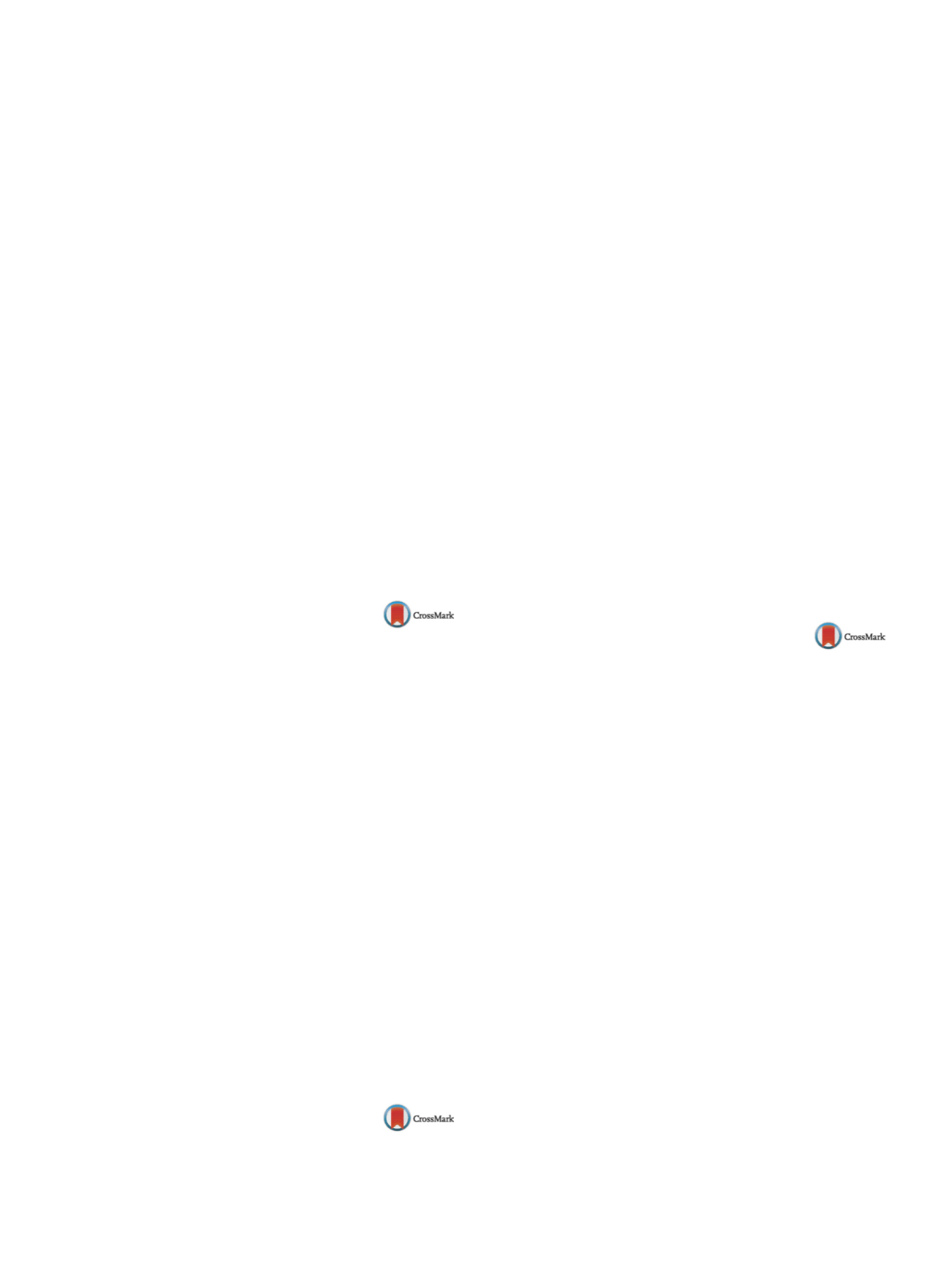

S26
25th European Congress of Psychiatry / European Psychiatry 41S (2017) S8–S52
Methods
We compared 515 male pathological gamblers from
inpatient treatment unitswith 269matched controls. Patientswere
diagnosed by experienced clinicians. In a random sample of 58
patients clinical diagnoses were validated through SKID 1 inter-
views
[1] .Results
88% had a comorbid diagnosis of substance dependence
(nicotine dependence 80%, alcohol dependence 28%). Only 1% of
the gamblers had an impulse control disorder diagnosis. Compared
with controls first degree relatives were more likely to suffer from
alcohol dependence (27.0% vs. 7.4%), PG (8.3% vs. 0.7%) and suicide
attempts (2.7% vs. 0.4%).
Conclusions
In addition to recent papers on the neurobiology
(Fauth-Bühler et al., 2016) and genetics of gambling
[2,3] , our find-
ings support the classification of PG as behavioural addiction in the
ICD-11
[4] .Disclosure of interest
The authors have not supplied their decla-
ration of competing interest.
Reference
[1] Fauth-Bühler M, Mann K, Potenza MN. Pathological gambling:
Impulse control disorder or addictive disorder? A review of the
neurobiological evidence. Addiction Biology 2016 [in press].
[2] Lang M, et al. Genome-Wide Association Study of Pathological
Gambling. European Psychiatry 2016 [in press].
[3] Mann K, et al. Comorbidity, family history and personality traits
in treatment seeking pathological gamblers compared with
healthy controls. European Psychiatry 2016 [in press].
[4] Mann K, Fauth Bühler M, Saunders J. Letter to World Psychiatry
2016;15(3):297–8.
http://dx.doi.org/10.1016/j.eurpsy.2017.01.134S061
Neurobiological mechanisms of
problem gambling and treatment
A. Goudriaan
∗
, R. van Holst , T. van Timmeren
University of Amsterdam- academic medical center, academic
medical center, Amsterdam, The Netherlands
∗
Corresponding author.
Background and aims
In the past decade, neurobiological
research on pathological gambling has flourished. Based on
neurobiological similarities between pathological gambling and
substance use disorders and similarities in genetics, diagnostic
criteria, and effective treatments, pathological gambling was the
first behavioral addiction to be included in the DSM-5 within the
revised category Substance-related and addictive disorders.
In this presentation novel findings from gambling research in our
research group focusing on the role of impulsivity, anticipation
towards monetary outcomes, and the interaction between stress
and cue reactivity will be presented, with a focus on new func-
tional MRI results. An overview will be given on the concepts of
impulsivity and compulsivity in pathological gambling and rele-
vant neurocognitive and neuroimaging findings. Implications of
neurobiological research for novel intervention research, such as in
neuromodulation studies and personalized medicine will be high-
lighted.
Keywords
pathological gambling; gambling disorder;
impulsivity; compulsivity; neuroimaging; craving
Disclosure of interest
The authors have not supplied their decla-
ration of competing interest.
http://dx.doi.org/10.1016/j.eurpsy.2017.01.135S062
Internet addiction and the virtual
self-image
T. Leménager
1 ,∗
, J. Dieter
1, H. Hill
2, K. Mann
1, F. Kiefer
11
Department of addictive behavior and addiction medicine, central
institute of mental health, medical faculty Mannheim/Heidelberg
university, Germany
2
Institute of sports and sports science, Karlsruhe institute of
technology, Germany
∗
Corresponding author.
Background
Internet gaming disorder appears to be associated
with self-concept deficits and increased identification with one’s
avatar. For increased social network use, the few existing studies
suggest striatal-related positive social feedback as an underly-
ing factor. Furthermore, few study findings indicate that internet
addicts generally have problems in emotional inhibitory control
processing.
Methods
Pathological and addicted internet gamers as well
as social network users were compared with healthy con-
trols regarding psychometric and neurobiological measures of
self-concept-related characteristics, avatar identification and emo-
tional inhibitory control processing.
Results and conclusion
Psychometric results indicated that both
subgroups showed higher self-concept deficits compared to
healthy controls. Neurobiologically, different brain activation pat-
terns were observed in the subgroups during self-knowledge
retrieval and inhibition of emotional stimuli. Furthermore, addicted
internet gamers showed a higher identification with the own
avatar, mirrored in an increased left angular gyrus activation, a
region functionally associated with identification processing and
feelings of empathy.
These findings provide a starting point for the deduction of spe-
cific psychotherapeutic treatment approaches for addicted internet
gamers and social network users.
Disclosure of interest
The authors have not supplied their decla-
ration of competing interest.
http://dx.doi.org/10.1016/j.eurpsy.2017.01.136S063
Mobile phone addiction: Evidence
from empirical research
D. Kuss
Nottingham Trent university, psychology, Nottingham, United
Kingdom
Introduction
Recent technological innovations have led to a pro-
liferation of mobile and smartphones, which have become the
cornerstone of modern societies in the 21
st
Century in terms of
communication, notifications and entertainment. Latest research
however suggests that with the advantages offered by mobile tech-
nologies, smartphone use today may have a significant impact on
mental health and well being. Overuse has been associated with
stress, anxiety, depression and addiction.
Objectives
This talk aims to highlight results of current mobile
phone addiction research.
Aims
To replicate and extend earlier research with regards to
psychopathology (depression, anxiety and stress), mobile phone
use and age on problematic mobile phone use and addiction.
Methods
Individuals aged 16 and above participated in an online
study that contained a pool of validated psychometric measures.
Data were analyzed using Structural Equation Modeling.
Results
Calls per day, time spent on the phone and using social
media significantly predicted prohibited and dependent mobile
phone use, whereas stress predicted dependent use only. Anxi-
ety and depression did not significantly predict problematic mobile
phone use. Findings also revealed that problematic mobile phone
use is prevalent across all ages and both genders.
Conclusions
The current results have implications for addiction
to using mobile phones, and suggest teachers, parents and affected
individuals may benefit from awareness and prevention efforts,
respectively.
This talk is based on Kuss, D.J. et al. (2016). Problematic mobile
phone use and addiction: The roles of psychopathology, mobile
phone use and age. Under review, and was funded by the British
Academy and NTU.


















